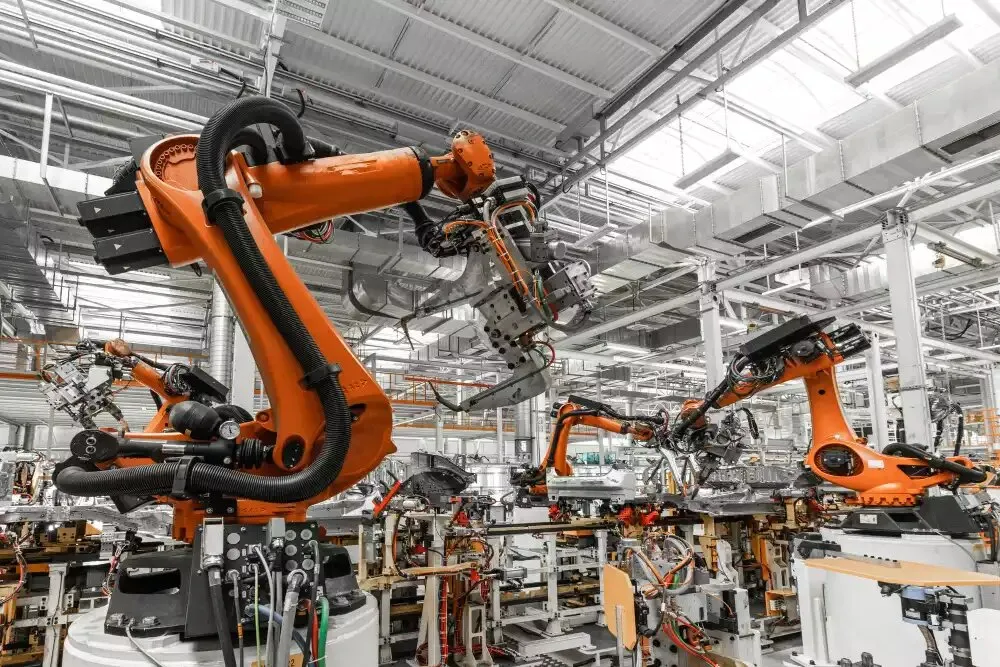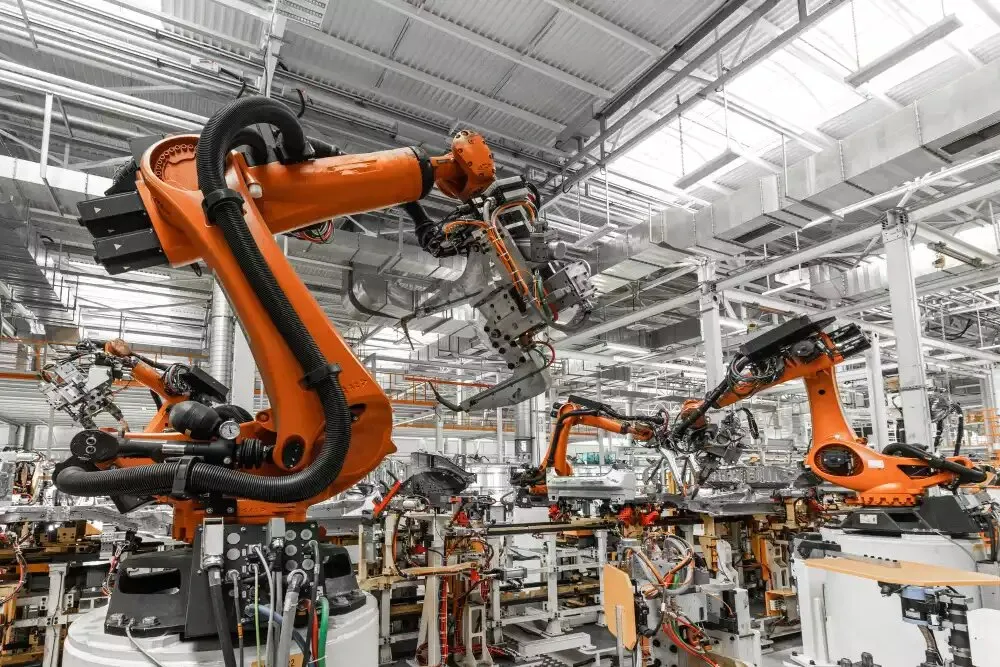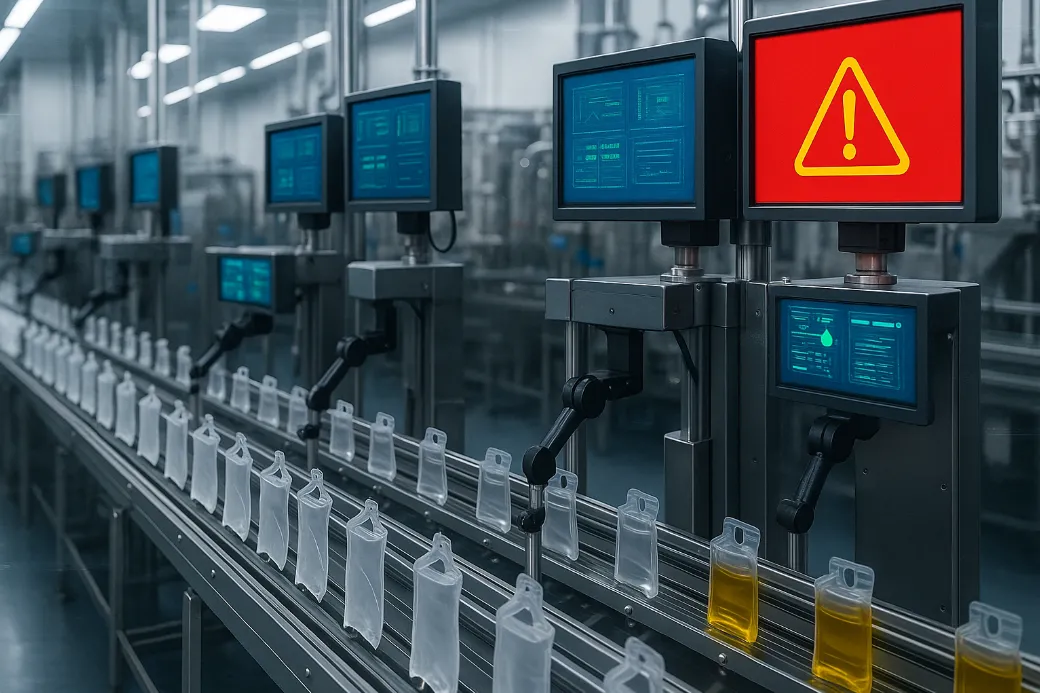
Industrial cybersecurity: understanding the risks and protecting yourself
Cybersecurity in industrial environments is a critical issue today. OT (Operational Technology) systems, essential to industry, are prime targets for cybercriminals. Industrial cybersecurity begins by understanding the risks surrounding an industrial infrastructure. This article explores the main OT cybersecurity threats and presents solutions to protect your infrastructure.
The Importance of Protection in an OT Environment
OT systems are at the core of modern industrial infrastructures. Their vulnerability to cyberattacks can have significant financial, strategic, and human consequences. With the rise of IoT and increased connectivity, these risks are growing exponentially.
Let's explore in more detail these three risks associated with cyberattacks on industrial infrastructures.
Preventing Financial Losses
Cyberattacks can cause significant financial losses, far beyond the cost of technical repairs. According to a recent IBM Security study, the average cost of a cyberattack in the industrial sector reaches 4.3 million euros per incident. This figure includes direct losses related to production downtime and fines. It also covers remediation costs and damage to the company's reputation. In some cases, such as ransomware, ransom demands can exceed several million euros, yet payment does not guarantee data recovery.
Financial impacts also affect SMEs, not just large corporations. An SME operating in an OT environment could lose up to 15% of its revenue following a major incident, primarily due to prolonged system downtime.
To mitigate such losses, it is crucial to invest in tailored industrial cybersecurity solutions. These include network segmentation and real-time monitoring. Incident response plans also help reduce risks.
Protection Against Industrial Espionage
Industrial espionage is a growing threat to businesses, especially in strategic sectors such as energy, automotive, chemicals, and technology. Financial losses due to the theft of intellectual property or sensitive data can be substantial. According to the Center for Strategic and International Studies (CSIS), the annual cost of global industrial espionage is estimated between 300 and 600 billion euros. Companies are targeted by competitors or malicious entities seeking a competitive advantage.
Financial consequences include market share loss and the need to redevelop copied products. Reputational damage is also a major concern. To prevent such losses, it is important to implement strict protection policies, such as encrypting sensitive data, enforcing access controls, conducting regular security audits, and raising employee awareness of cyber risks.

Ensuring Safety of People and Assets
In an operational environment (OT), cybersecurity is not just about protecting data. It is also linked to the safety of people and assets. Industrial systems, such as those used in critical infrastructures (factories, power plants, transport networks), control essential physical equipment. A cyberattack on these systems can lead to serious malfunctions, including unexpected production shutdowns, explosions, chemical leaks, or failures in the industrial control system.
These incidents not only jeopardize infrastructure, but also affect employee safety. They can also have consequences for the surrounding population and the environment. In the face of these risks, it is essential to implement appropriate Industrial cybersecurity measures. This includes segmentation of IT and OT networks, and robust access control policies.
Cybersecurity Threats in OT Environments
Cyber attacks on infrastructure can take many forms. Among the best-known are the following examples of industrial cybersecurity threats:
Ransomware
Definition: Ransomware is malicious software or viruses. Its aim is to block access to a computer or files by encrypting them. It then demands that the victim pay a ransom in exchange for access to the data.
Ransomware targets IoT infrastructures to encrypt data or lock down critical systems. These attacks paralyze industrial operations. And often force companies to pay ransoms to recover their data.
- Example: In 2021, the ransomware used against Colonial Pipeline paralyzed the fuel supply network. This attack caused a rise in gasoline prices and a shortage across the United States. It cost more than $4.4 million in ransom.
- The impact of a ransomware attack on an industrial system can be considerable. It can range from total shutdown of operations to significant financial losses. What's more, these disruptions can jeopardize the safety of workers and citizens. The risk of accidents or dangerous situations rises sharply.

Supply Chain Attacks
By targeting suppliers or partners, attackers can infiltrate OT systems. These attacks exploit the trust between the various players in a supply chain.
- Example: In 2020, the Orion software from SolarWinds was compromised. Attackers infiltrated the update process. They managed to create a backdoor through critical infrastructures. These include government agencies and major corporations. This attack revealed the vulnerability of software supply chains.
- The impact of an attack on the supply chain can be devastating, particularly through the spread of malware. This malware can compromise critical systems. It can also enable large-scale espionage, exposing sensitive and strategic data. What's more, these intrusions often leave persistent vulnerabilities. This gives attackers prolonged access, increasing the risk of further compromises.
Social engineering and phishing
Social engineering is a psychological manipulation technique used by cybercriminals to carry out various attacks. One of the cybersecurity threats resulting from this technique is phishing. A cyberattack in which attackers attempt to obtain sensitive information. Malicious individuals pretend to be an existing person in order to deceive their victim. Manipulation of industrial infrastructure personnel to gain unauthorized access to OT systems. The attack can be carried out via fraudulent e-mails or misleading phone calls.
- Example: An employee at a power plant unwittingly shared access information via a fraudulent e-mail.
- The impact of a social engineering attack on an industrial system can include unauthorized access. This would enable attackers to infiltrate sensitive infrastructures. Subsequently, industrial processes could be manipulated, disrupting normal operation. This manipulation could cause material damage or prolonged downtime. Such an attack could also lead to a loss of control over operations.
Exploiting vulnerabilities in IoT protocols
OT protocols, such as Modbus, DNP3 or BACnet, were designed in an era of less connectivity. Today's cyberthreats were lower back then. These protocols often lack modern security mechanisms. For example, they lack data encryption or communication authentication. This exposes them to cyber-attacks.
Attackers exploit these vulnerabilities to intercept, alter or manipulate communications between industrial equipment.
- Example: in 2017, the Triton malware targeted Schneider Electric's industrial control systems. It was designed to manipulate safety controllers by disrupting or destroying industrial processes. This put sensitive installations at risk.
- Such exploitation can lead to major interruptions, colossal financial losses and, in extreme cases, material or human damage.

Denial of service attacks (DDoS)
DDoS attacks aim to overload networks or OT systems by flooding infrastructures with massive requests. This renders services inoperable. In an industrial context, this unavailability can affect critical processes. For example, production, energy management or water supply may be affected.
- Example: in 2016, the Mirai botnet exploited poorly secured connected devices to carry out massive DDoS attacks against critical infrastructures. By flooding targeted servers with traffic, it caused major outages. This affected essential online services.
- The impact of OT protocol vulnerabilities can lead to several major problems for an industrial infrastructure, and therefore for Industrial cybersecurity. In addition to bringing systems to a standstill, these attacks can lead to data loss. They can also lead to equipment failure. What's more, they can cause production delays.
Integration of insecure IoT devices
The growing adoption of IoT in OT environments is introducing new cybersecurity threats. These devices, often poorly secured or insufficiently configured, serve as entry points for cybercriminals. IoT devices can be used to access industrial networks, spread malware or alter collected data.
The absence of regular updates or robust security protocols exacerbates the situation. This makes these devices particularly attractive to attackers.
Solutions for successful Industrial cybersecurity
To protect your industrial infrastructures against cyber attacks, it's essential to adopt the right strategy. DATIVE offers tailor-made Industrial cybersecurity solutions for your systems. Our services cover risk assessment and industrial network security. We also deploy ANSSI-certified cybersecurity solutions. Here are some examples of our approach:
● Cybersecurity Audit
One of the first steps in securing your industrial infrastructures is to carry out an in-depth assessment of their cybersecurity. Our audits enable us to identify existing vulnerabilities and propose tailor-made recommendations. This reinforces security in a progressive way. These assessments are based on the NIST Cybersecurity Framework (CSF). This ensures optimum compliance while meeting the specific needs of your systems.
Assess the safety of your industrial infrastructures. Contact us today.
● Vulnerability watch
Proactive monitoring of vulnerabilities is essential to anticipate and react rapidly to new threats. DATIVE actively monitors potential vulnerabilities affecting our customers' equipment. Tests are carried out in a controlled environment to validate the effectiveness of our solutions. We then provide appropriate security patches. These are accompanied by a detailed report presenting the solutions implemented and their effectiveness. This approach ensures a rapid and reliable response to any eventuality.

● EBIOS RM risk analysis
Our risk analysis approach is based on the EBIOS RM method. It aims to identify the threats and potential vulnerabilities of your industrial systems. This approach enables us to assess the critical assets to be defended and to map possible attack paths. Based on this analysis, we propose appropriate security measures to reduce risks. These proposals will enable us to proactively protect your infrastructures.
● Post curing and sealing
The curing of workstations is also known as hardening. It's an Industrial cybersecurity solution designed to limit attack surfaces. This includes advanced system configuration, so that only essential requirements are met. Also, workstation sealing solutions ensure that no unauthorized updates or modifications are possible. These measures ensure the stability and security of your critical workstations. They also reduce the risk of intrusion or malfunction.
Conclusion
Industrial cybersecurity measures are essential. They are necessary to cope with the emerging threats of Industry 4.0. Adopting best practices and investing in specialized software and equipment can significantly reduce risks. At DATIVE, we support you in your first steps towards enhanced industrial security. But also on more complex issues. Don't leave your industrial infrastructures to the mercy of threats: entrust them to experts to guarantee their protection.
Contact us for more information





